Coconut coir is a byproduct of coconuts that has various uses. The fibers found within the coconut shell are extracted and utilized to create ropes, brushes, upholstery filler, and even carpets. You are undoubtedly familiar with doormats and hanging basket liners made of coir.
Coconut coir is perfect for outdoor gardening applications because it doesn’t decay. Learn why it’s becoming more and more common to use coconut coir as a potting mix and organic soil addition and discover how it might help your garden.
How is Coco Coir Made?

A thorough processing procedure is necessary when using coconut coir in hydroponic growing systems. First, they have to take the coconuts’ coir out. The husks become soft and pliable after soaking in water.
The maker will need to remove a large portion of the salt that the coconut coir would absorb if production is carried out in tidal waters.
How Coconut Coir Is Used in Gardening
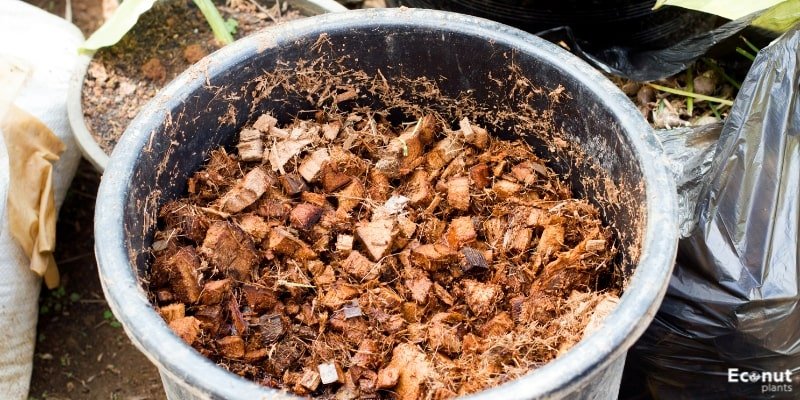
A growing number of people are using coconut coir in potting mixes for seed, in addition to its traditional use as the lining for suspended baskets. It also makes soilless combinations for garden beds, climbers, container plants, and hydroponics.
Coconut coir is a beneficial additive to any type of soil. Even when soils are damp, it helps hold onto moisture and makes them more porous. When dry, coconut coir is significantly easier to rewet than peat because it absorbs 30% more water.
It improves drainage and decreases the hardness of clay soil. It also helps sand and soil hold onto water for extended periods.
Advantages of Using Coir over Peat
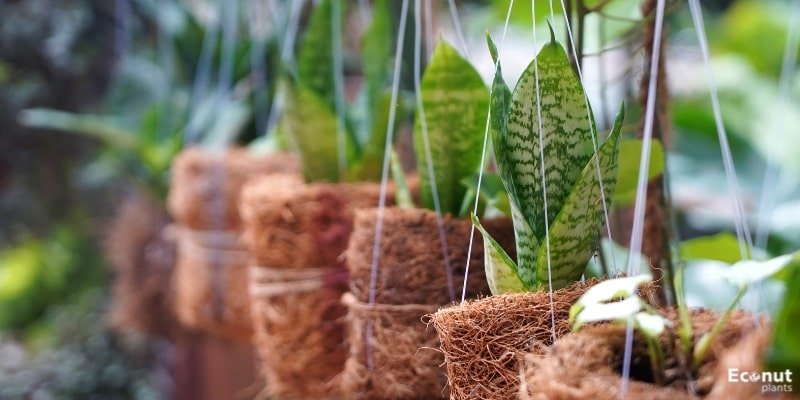
Peat takes hundreds of years to produce. The demand for alternatives is so great that even if many respectable companies in the peat industry are working hard to harvest and manage peat at a responsible, sustainable rate, alternatives are still required.
Given that they can be collected every two months and grow all year, coconuts are a sustainable crop. Coir provides the following advantages over peat:
- Coir breaks down more slowly in the soil than peat does because of its slower rate of disintegration.
- It’s sterile and contains no cannabis seeds.
- The pH of the soil is usually between 5.8 and 6.8, which is less acidic.
- Even in damp soils, coir increases air permeability and enhances moisture retention.
- The pH of the coir is already neutral; therefore, you don’t need to add lime to make the soil sweeter.
- Due to the ease of rewetting when they dry out, plants can recover from dry conditions faster. Water conservation is the outcome of the reduced requirement for irrigation.
Disadvantages of Using Coir
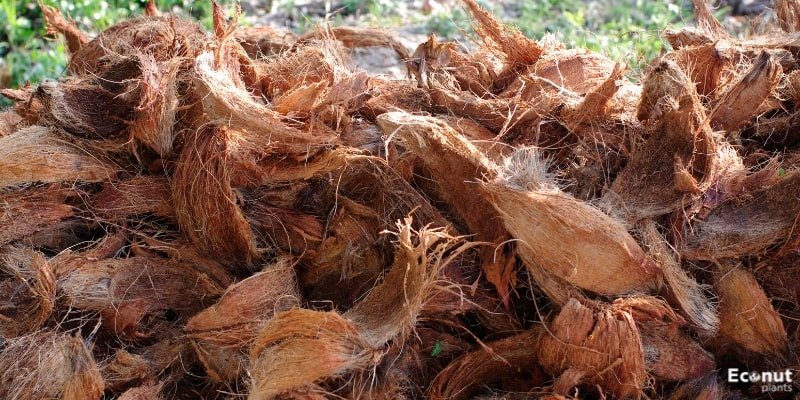
There are certain drawbacks to using coconut coir as a horticultural resource. The following are the disadvantages:
- Since coir is compressed, it requires particular processing before it can be used in gardening.
- Since soil retains water, there’s a chance that salt will build up in it.
- Despite having a lower calcium content than peat, coir’s neutral pH eliminates the need to add lime to the soil.
- Coir is also deficient in several other nutrients. However, it does contain a considerable amount of potassium and a few other micronutrients.
- PEAT is less expensive than coir, although it can be more difficult to source.
Types of Coconut Coir Products
Coconut coir is known by several names. It’s common to employ marketing terms like coco-peat, coir dust, coir fiber pith, and coir-peat.
Comprised of mature coconuts and coir that is dark brown. Young green coconuts provide the finer, softer white coir. The following varieties of coconut coir are suitable for your garden:
Baskets

Hanging plants that dry out easily can benefit from the moisture retention provided by premade coconut coir basket liners. Container-accommodating liners are available in rectangular or bowl designs.
Depending on where you hang the basket, the climate, and the amount of water your plant receives, liners typically last one to two years before becoming frayed. Pay attention to any symptoms of deterioration when you mix them into the soil in your garden.
Bricks and Blocks
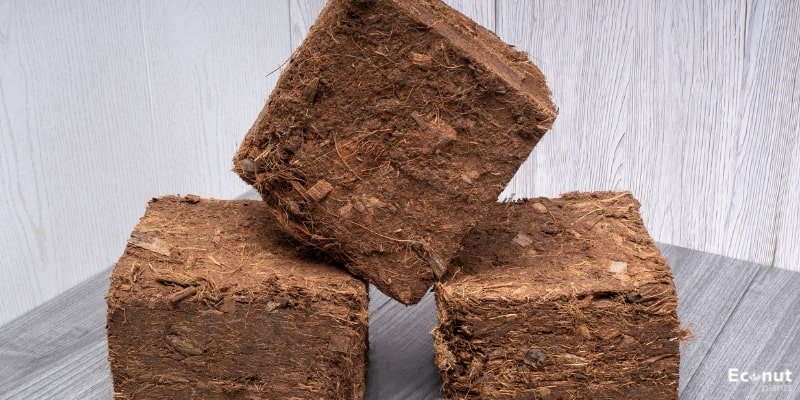
Manufactured into bricks or blocks, horticultural coir is a material similar to peat. Brick or coir blocks are typically difficult to find. Once you’ve found it, remove it from its box and store it somewhere else.
The coir brick needs to be soaked to acquire a loamy texture. It takes eleven pounds to make sixteen liters of coir from one brick.
Pots
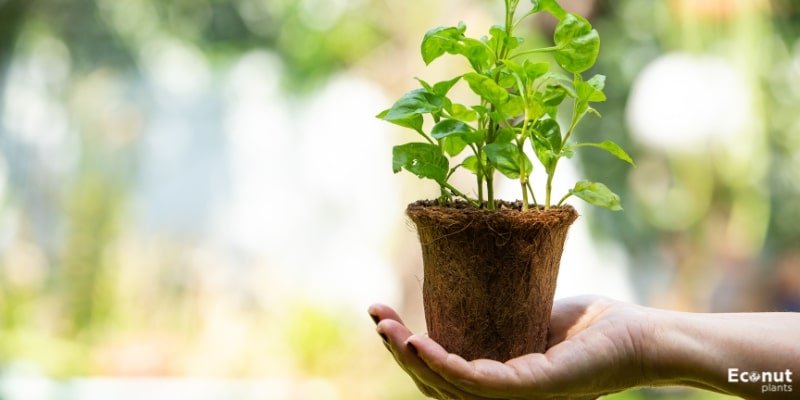
When buying potted plants from a garden center, look for containers made of coconut coir. Coir is a great option for designing a sustainable garden because it is a compostable material. You can also reduce the stress a plant experiences when transplanting it by simply setting the pot directly into the ground.
Potting Soil
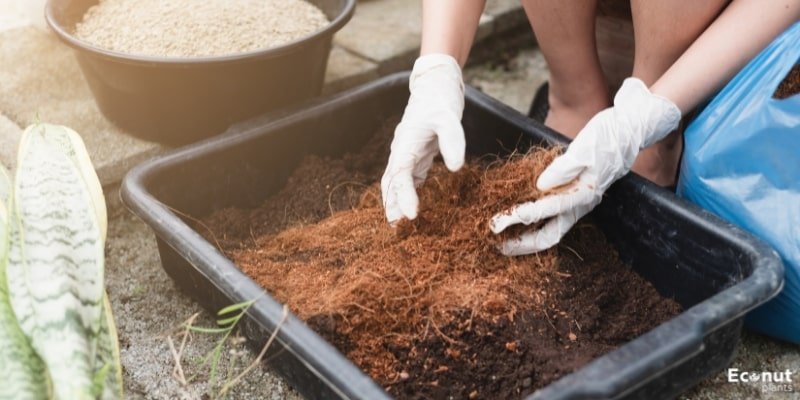
Coir is also a component of several indoor potting mixes. A non-renewable component of most potting mixes is still peat. But if you use coconut coir, you can mix your potting mix rapidly.
Coir is a great option for seed starting because it is sterile and organic. The percentage of coir in the mixture should ideally not exceed 40% if you are using it as a seed starter.
Chips
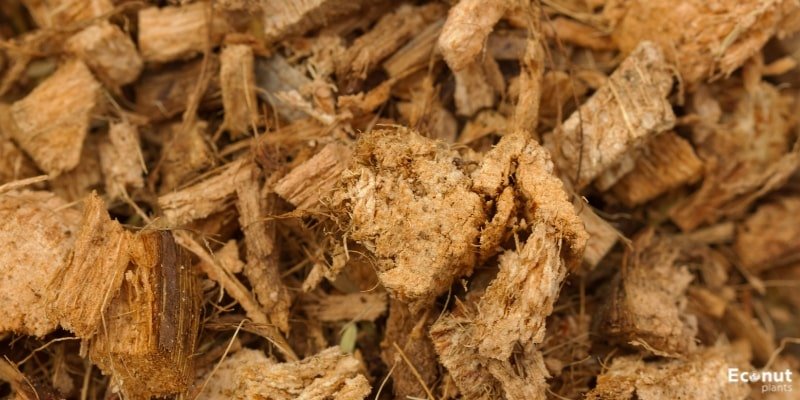
Claimed coconut husks are packaged as coconut coir chips to aid in soil aeration. The chips are much coarser than the finer, similarly soil-remedial zing coconut coir. Chips provide lots of aeration and water retention, which makes them perfect for hydroponic plants.
Coco Poles

Climbing plants use coconut coir poles, or poles made of coco, as support to reach their maximum height. Plants that benefit from coco poles include philodendrons, pothos, and monsteras.
This is consistent with the reasoning that makes coco poles more successful than sphagnum moss poles. However, moss poles may be better at holding onto water than coco poles.
How to Choose High-Quality Coco Coir
The creation of premium coco coir depends heavily on the techniques employed in its preparation, processing, and harvesting. Since you have no direct control over any of these factors, you must choose suppliers who adhere to the industry standards for producing coco coir.
Once the coir is removed from the coconuts, it is stored in mounds for a few years. When this happens, the majority of companies treat the coir with a chemical sterilizer to make it suitable for use in your garden. This carries an additional risk in that the peat and fibers could deteriorate too soon.
They are going to:
- Steer clear of environments that promote the growth of germs.
- Provide a unique system to control coconut coir’s aging process.
- To get rid of salts, wash and rinse the coir.
- Make the ideal combination of fibers, chips, and pith.
- Properly package and keep their merchandise.
Thankfully, none of that is required of you. You can either ask your local garden center about the supplier’s techniques to ensure it is finished or read the information below, where I address most of these issues for each category of coconut coir product I evaluate.
What nutritional requirements are there for coconut coir?
You will need to provide your plants with extra nutrition because coconut coir is an inert growing medium. While it’s common knowledge that certain nutrients are exclusive to cocoa coir, this isn’t always the case.
The usual General Hydroponics Flora series, a pH testing kit, and some Calimagic calcium and magnesium supplements should be plenty.
There are two choices you might attempt if you want to switch things up and try something more specialized in coco-coir. These might pair nicely with the coconut coir brand you purchased:
- CANNA Coco A & B + Calimagic
- Fox Farms Nutrient Trio + Calimagic

